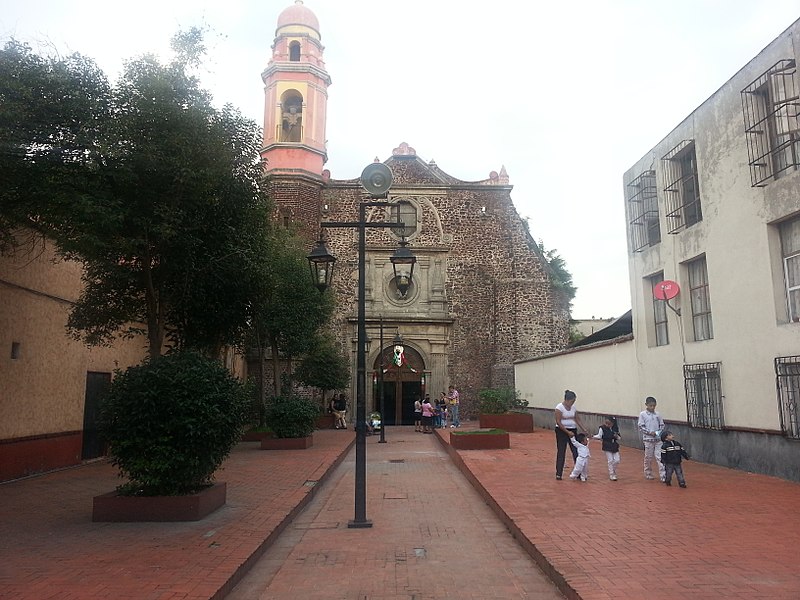
__
Santa María la Redonda may be among the most astounding churches in and around the city center. For the mere quality of light which barely reaches the nave, yet, streaming through the oculi in the vault, seems to doubly illuminate the apse. It’s a shame the church is not more often visited by those from other countries.
The apse is, in fact, nearly perfectly circular. It’s a unique example of New Spanish Baroque and one of the first in this style. It’s been called the maximum expression of Baroque. Yet for all that, it seems a squat, brick building in an all but forgotten corner of the Guerrero neighborhood.
In fact, the neighborhood of Santa María was originally part of the pre-Hispanic neighborhood, and battleground, of Cuepopan. Meaning simply, “along the road,” the neighborhood had been a first stop for the frequent invaders arriving from the west along the Mexico-Tacuba Causeway. A chapel was consecrated here as early as 1524, one of the original churches for the indigenous of the neighborhood. Dedicated by the Franciscans to the Assumption of the Blessed Mary, by the end of the 16th century it had a school for indigenous children alongside it. This church was completed in 1677, then rebuilt in 1731 and 1735 in this new and triumphant Baroque style.
Out front of the church is a tree-lined atrium overlooking a small square. Sunday masses at 12 are still accompanied by mariachi music as it is the closest church to the Plaza Garibaldi.
The main statue of the Virgin of the Assumption within the church has been surrounded by legend for centuries. The head and hands are said to have been brought from Spain by a priest named Rodrigo de Sequera. He presented these to the parish priest who in turn gave them to a virtuous and noble indigenous woman of the parish. She offered to have the figure completed to hold the hands and head. When she arrived to her own humble home nearby, she found three carvers looking for work waiting for her. She commissioned the statue and gave them space in her home to work. After three days of total silence, she peeked into the designated workroom to discover the statue complete in its majesty and beauty. The workers were nowhere to be found, but this was only the beginning of the following of the Virgin of Santa María la Redonda.
Later, this same, and beloved Virgin, disappeared from the main altar and was replaced by an ordinary plaster statue, said to have beeb painted in garish colors. It was discovered, years later, that the actual Virgin of La Redonda had reappeared in the church of Candelaria de los Patos. An investigation revealed that this Virgin has been taken from the church of San Jeronimito when the roof there collapsed.
Sources cited on this page:
Angeles González Gamio, La Jornada: Santa María la Redonda
 santamariadelaredonda@gmail.com
santamariadelaredonda@gmail.com
 +52 55 5526 9848
+52 55 5526 9848
 https://www.facebook.com/Parroquia-Santa-Maria-La-Redonda-111825210475297/
https://www.facebook.com/Parroquia-Santa-Maria-La-Redonda-111825210475297/
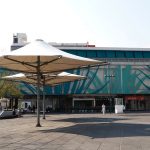
0.16 kms.
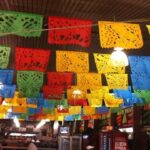
0.18 kms.

One of the Center City's most beautiful of Baroque chapels is almost at the southern edge of the island.
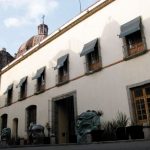
The former Santa Inés Church & Convent provides some lively competition on a City Center street.
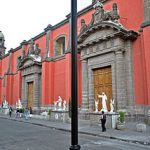
One of the city center's most illustrious former convents is still a sight to see.
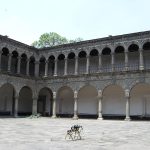
All that's left of the old monastery that named the neighborhood that's as "Mexico City" as any.

One of the 18th Century's best examples of the new Neo-Classicism, a church holds its own in La Merced.